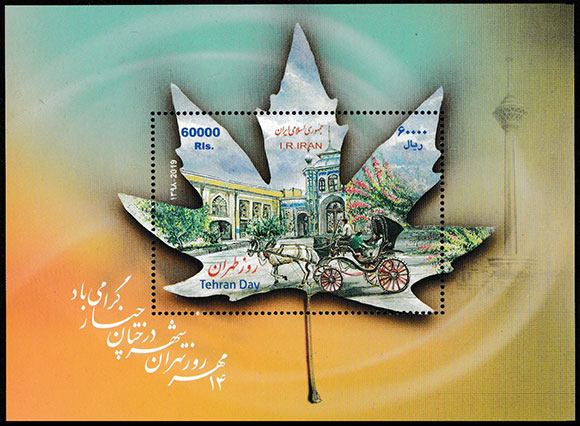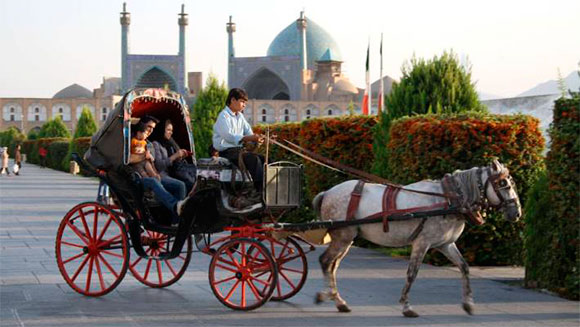
On October 6, 2019, the Iranian Post issued a souvenir sheet in honor of Tehran’s Day.
In Tehran, the day of the city is celebrated annually on October 6, starting in 2016. This date was approved by the City Council in honor of the day when the city was officially recognized as the capital of Iran in 1907.
Excavations show that the settlement of people on the site of modern Tehran already existed in the 6th millennium BC. Initially, Tehran was a village a few kilometers north-west of the city of Rey - one of the oldest cities in Iran. The impetus for the rise of Tehran as a political center was the destruction by the Mongols of Ray in 1228, after which the residents rushed to Tehran, almost untouched by Genghis Khan. In 1404, Tehran was already described as a large city, in the north of which the residence of the Timurids is located. The city was actively developing, its importance increased even more during the reign of the Safavids dynasty. A real building boom occurred in Tehran in the 18th century. The Zendi rulers, who replaced the Safavids, began to actively build up the government quarter: a palace, a harem, and residences for state institutions were built. In 1786, Mohammed Khan finally transferred the capital to Tehran, while the city was called Dar el-Khalaf. During the Qajar dynasty, Tehran became the third most populated city in the Middle East.
Tehran officially became the capital of Iran on October 6, 1907, when the corresponding amendments were made to the Constitution of the country. This date is today celebrated as the day of the city. Every year, in early October, in Tehran, various events related to the history of the city are held in historical and cultural centers, many museums work for free, and thematic exhibitions are held.
The ceremonial presentation of the souvenir sheet took place in the Golestan Palace in the presence of the Minister of Foreign Affairs, the mayor of the city and members of the city council.

The gates of the National Garden with a horse-drawn cart in front of the entrance inscribed in a stylized image of a plane-tree leaf are depicted on the souvenir sheet as a symbol of the city.
The gates of the National Garden and the buildings adjacent to it on Mashgh Square were built in Tehran in the 1920s. They were erected on the site of the ancient gates of the Qajar era with the preservation of all sizes and appearance. The construction took place under the leadership of Jafarkhan Kashani.
For many years, the gates of the National Garden have been the main symbol of the city, so it is not surprising that the author of the postage stamp artist Nasrabadi chose them as the main plot.

In front of the building of the gates of the National Garden, the artist depicted a light horse-drawn cart. Such crews harnessed by low local horses can still be found today on the central streets and squares of the city - as entertainment for tourists.
It is no coincidence that a plane tree appeared on the souvenir sheet, as Tehran is sometimes also called the city of plane trees. From north to south, Tehran crosses the longest street in the entire Middle East - Val-Asr Street, whose length is 18 kilometers. During the construction along Vali-Asr, almost 15,000 plane trees were planted; some plane trees are now over 100 years old.
Перейти в каталог


